Skincare routine for oily skin – Learn the ultimate 7-step regimen, with science-backed tips and product recommendations to manage oil, acne, and shine smartly.
Let’s be real—oily skin can be a lot. One minute you’re vibing with that healthy glow; the next, it’s like your T-zone’s trying to outshine the sun. But here’s the good news: having oily skin doesn’t automatically mean breakouts, clogged pores, or living off blotting sheets. In fact, with the proper routine (and a little skin science on your side), you can balance oil production, keep your pores happy, and get that fresh, clean look without going overboard.
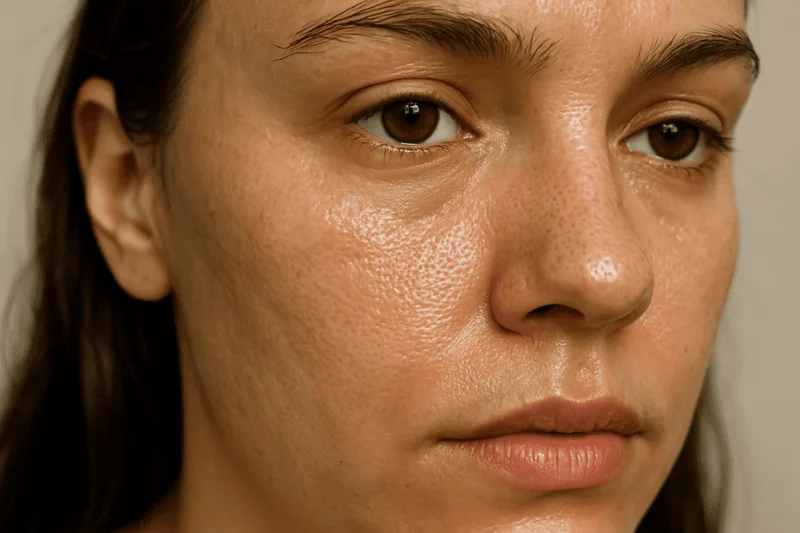
With the proper care and a few tips, you can keep things manageable and enjoy your skin’s natural beauty!
With a solid, simple routine (that makes sense), you can keep the shine under control and let your skin do its thing—in a good way. Let’s break it down.
Understanding Oily Skin — The Science Behind the Shine
What causes oily skin?
Oily skin happens when your sebaceous glands go into overdrive and make more sebum than your skin needs. While sebum helps protect and hydrate, too much can clog pores and trigger acne. Genetics, hormones, diet, stress, and even the wrong skincare products can all affect your oil levels.
Common misconceptions about oily skin
- Myth: Oily skin doesn’t need moisturizer.
- Fact: Skipping moisturizer can make your skin even oilier because it tries to compensate for the lack of hydration.
- Myth: You should wash your face as often as possible.
- Fact: Over-washing strips natural oils and leads to more oil production.
How sebum production works
Sebum is controlled by androgen hormones and regulated by your skin’s internal feedback loop. Here’s a more casual and natural rewrite of that sentence:
When skin becomes too dry or irritated, it kicks up oil production even more. That’s why the goal isn’t to strip the oil away—it’s all about finding the right balance.
Why a Skincare Routine Matters More for Oily Skin Types
Consistent care helps:
- Keep pores clear (clogged pores = acne)
- Reduce inflammation and redness
- Balance sebum without over-drying
- Prevent shiny T-zones and mid-day grease
You’re training your skin to chill out.
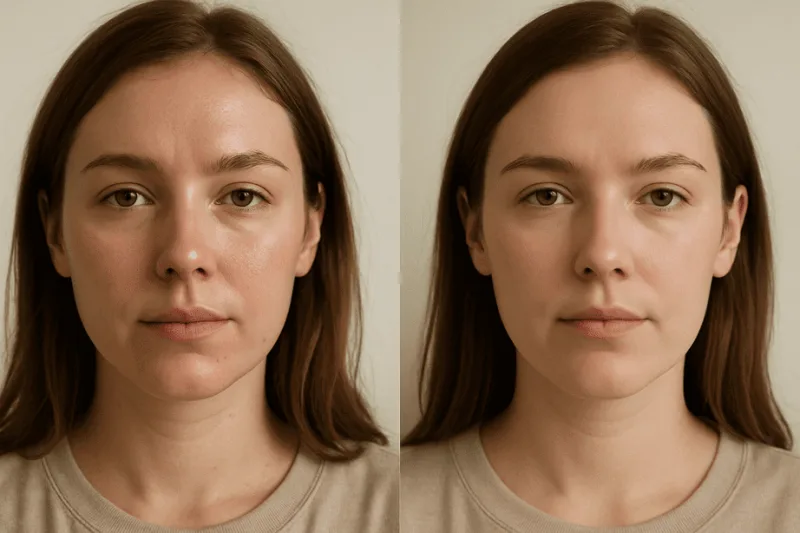
Step-by-Step Skincare Routine for Oily Skin
Step 1: Gentle, Non-Comedogenic Cleanser
Look for:
- Salicylic acid (a BHA that unclogs pores)
- Tea tree oil (natural antibacterial)
- Gel-based or foaming cleansers
Avoid:
- Harsh sulfates (like sodium lauryl sulfate)
- Bar soaps (they mess with pH)
Pro tip: Wash twice a day—no more, no less.
Step 2: Alcohol-Free Toner
Why it helps:
- Restores pH
- Removes leftover grime
- Tightens pores without overdrying
Good ingredients:
- Witch hazel (natural astringent)
- Niacinamide (oil-balancer)
- Aloe vera (soothing)
Step 3: Lightweight, Hydrating Serum
Oily skin craves hydration, not oil.
Look for:
- Hyaluronic acid (binds water to skin)
- Niacinamide (regulates sebum + calms redness)
- Zinc PCA (controls shine)
These serums sink in fast, hydrate deep, and leave zero residue.
Step 4: Oil-Free Moisturizer
Skip the heavy creams.
Use:
- Gel-based or water-based moisturizers
- Ingredients like glycerin, dimethicone, and panthenol
Avoid:
- Shea butter or coconut oil (can clog pores)
Step 5: Broad-Spectrum Sunscreen (SPF 30+)
Yes, even oily skin needs SPF daily. Try:
- Gel sunscreens
- Mineral-based (zinc oxide, titanium dioxide)
- Matte finish or oil-control formulas
Sun damage = more oil and inflammation. No thanks.
Step 6: Weekly Exfoliation
Do it 1-2 times a week max. Overdoing it makes things worse.
Use:
- BHA (Salicylic acid) – penetrates oil, clears pores
- AHA (Lactic or glycolic acid) – boosts cell turnover
Skip the walnut scrubs. Your face isn’t a cutting board.
Step 7: Optional Add-ons
When your skin needs a little extra:
- Clay masks (kaolin, bentonite): Absorb oil and detox skin
- Spot treatments (salicylic acid, benzoyl peroxide)
- Blotting papers (as a quick fix, not a routine)
Use masks once a week and spot treatments only on pimples.
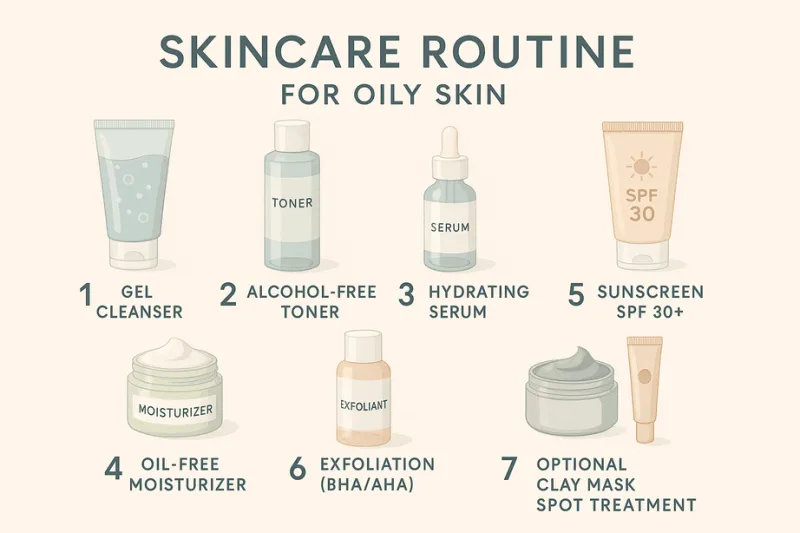
Ingredients to Embrace & Avoid for Oily Skin
Love These:
- Salicylic acid
- Niacinamide
- Zinc
- Clay (kaolin, bentonite)
Ditch These:
- Coconut oil
- Isopropyl myristate
- Heavy silicones
- Alcohol-based toners
Morning vs Night Routine Differences
Morning: Cleanser → Toner → Serum → Moisturizer → Sunscreen
Night: Cleanser → Toner → Serum → Moisturizer (+ exfoliate or mask 1-2x/week)
Consistency is your best friend. Results take time, but they’ll come.
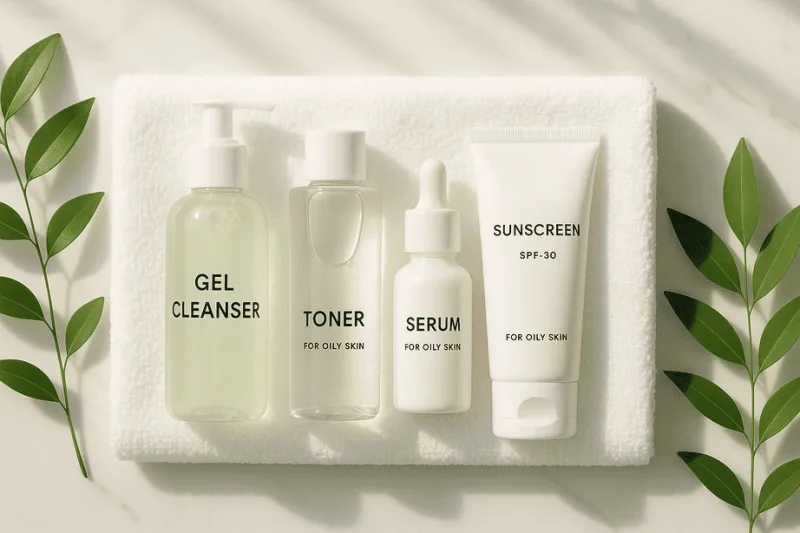
Myths About Oily Skin — Busted!
- Moisturizers make oily skin worse? Nope. The right kind hydrates without shine.
- Do blotting papers fix oil? Temporarily, yes—but overuse can irritate your skin.
- Scrubbing = cleaner skin? Hard pass. Gentleness is always better.
Diet and Lifestyle Habits That Impact Oily Skin
- Eat less sugar and dairy, which can trigger oil production
- Stay hydrated – water helps flush toxins
- Manage stress – cortisol boosts oil
- Get enough sleep – your skin resets at night
When to See a Dermatologist
If you’re dealing with:
- Persistent acne
- Painful cysts
- Sudden oiliness changes
- Scarring or pigmentation
Don’t hesitate—get professional help. Sometimes, a prescription product is your best move.
Frequently Asked Questions (FAQs)
1. Can oily skin be dehydrated?
Yes! Dehydrated skin lacks water, not oil. That’s why even oily skin needs hydrating products.
2. Is niacinamide good for oily skin?
Absolutely. It helps control sebum, minimize pores, and soothe redness.
3. How often should I wash my face?
It should be used twice a day, morning and night. More than that, it can strip your skin and make it oilier.
4. Should I skip sunscreen if I’m indoors?
Nope. UV rays still reach your skin through windows.
5. Are natural remedies effective?
Some, like aloe vera and tea tree oil, work well. But always patch test and avoid DIY acids.
6. What’s the best mask for oily skin?
Clay masks are gold, especially with ingredients like kaolin or bentonite.
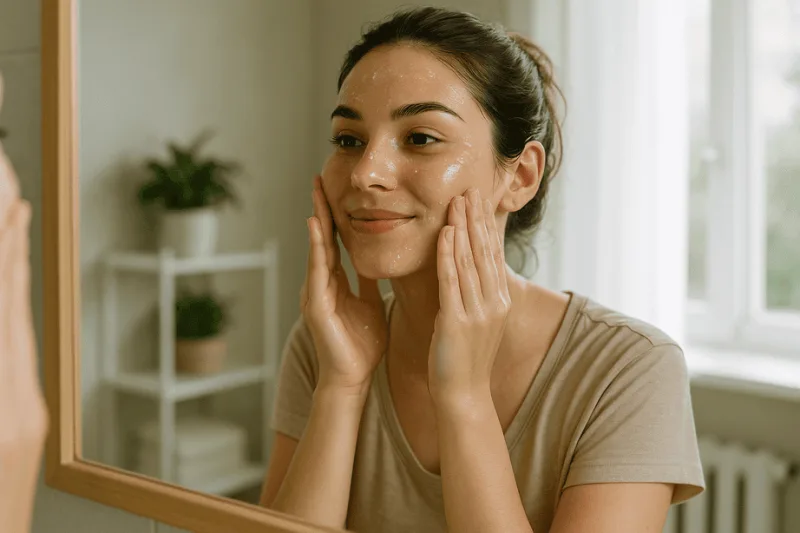
Conclusion: Keeping It Real With Oily Skin Care
Managing oily skin doesn’t mean drying it out, but working with it. With the right ingredients, patience, and consistency, and the right routine, you can keep your skin feeling fresh and looking clear and leave the house feeling confident.


